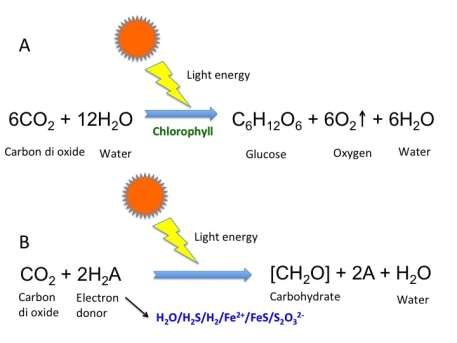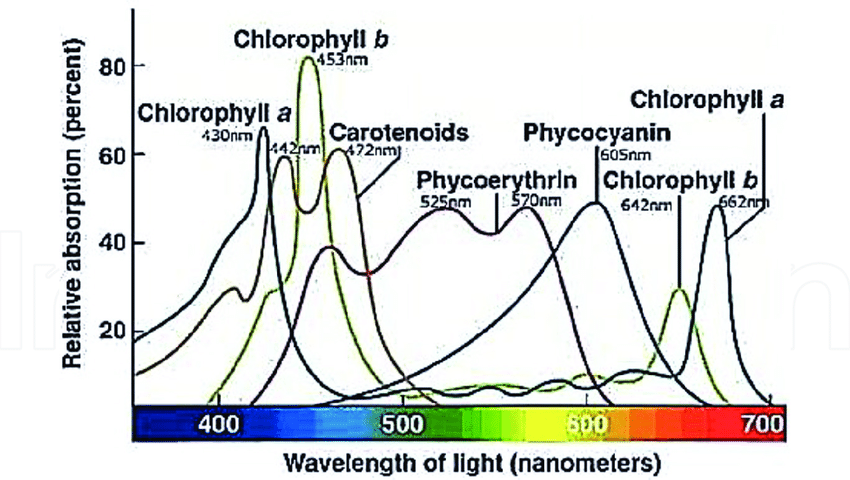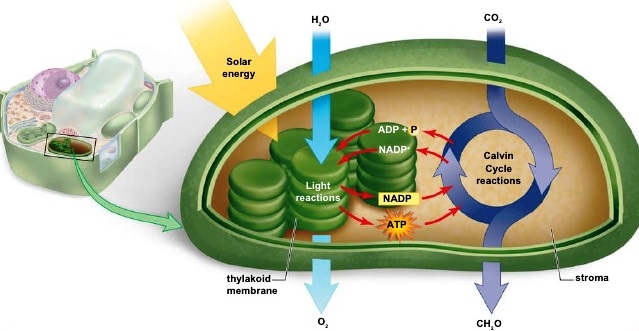Photosynthesis is…?
Photosynthesis is the process by which plants, algae, and some bacteria convert light energy into chemical energy in the form of glucose and other sugars.
The mechanism of photosynthesis has evolved over millions of years to become highly efficient, allowing organisms to thrive in a wide variety of environments.
Evolution of Photosynthesis
The earliest evidence of photosynthesis dates back to around 3.5 billion years ago when simple, single-celled organisms began to use light energy to produce organic compounds. These early photosynthetic organisms were likely anoxygenic, meaning that they did not produce oxygen as a byproduct of photosynthesis. Instead, they used electron transport chains to generate ATP and reduced compounds such as NADPH, which were then used to fix carbon dioxide into organic compounds.

As photosynthesis evolved, organisms began to develop more complex photosynthetic structures, such as chloroplasts in plants and algae, and cyanobacteria. Chloroplasts and cyanobacteria are both photosynthetic organelles that contain pigments, such as chlorophyll, that absorb light energy and transfer it to electron transport chains. These organelles also contain enzymes, such as ribulose bisphosphate carboxylase, that catalyze the fixation of carbon dioxide into organic compounds.
One of the key innovations in the evolution of photosynthesis was the development of oxygenic photosynthesis, in which oxygen is produced as a byproduct of photosynthesis. This innovation is thought to have emerged around 2.5 billion years ago and is believed to have been driven by the evolution of cyanobacteria. Oxygenic photosynthesis is much more efficient than anoxygenic photosynthesis and allows for the production of large amounts of glucose and other sugars.

B-Anoxygenic-photosynthesis
The evolution of oxygenic photosynthesis also had a profound impact on the Earth’s atmosphere, as the rise of oxygen-producing organisms led to the formation of an oxygen-rich atmosphere. This change in the atmosphere allowed for the evolution of new forms of life, such as animals, which require oxygen to survive.
As photosynthesis continued to evolve, organisms began to develop new pigments, such as carotenoids and phycobilins, that could absorb light energy in different regions of the spectrum. This allowed for the expansion of photosynthesis into a wider range of environments, including deeper waters and shaded areas. Additionally, some organisms developed mechanisms to protect themselves from damage caused by excess light energy, such as the development of non-photochemical quenching mechanisms in certain algae and plants.

The evolution of photosynthesis has also been influenced by the development of mutualistic relationships between photosynthetic organisms and other organisms. For example, certain plants have evolved to form symbiotic relationships with mycorrhizal fungi, which can help to provide the plant with nutrients and water, in return for sugars produced by the plant through photosynthesis. Additionally, some algae have formed symbiotic relationships with animals, such as corals, which provide the algae with a protected environment in which to photosynthesize.
In conclusion, the mechanism of photosynthesis has evolved over millions of years to become highly efficient, allowing organisms to thrive in a wide variety of environments. The evolution of photosynthesis has been influenced by a variety of factors, including the emergence of oxygenic photosynthesis, the development of new pigments, and the formation of mutualistic relationships between photosynthetic organisms and other organisms.
The Evolutionary Significance of Photosynthesis

The evolutionary significance of photosynthesis can be understood by considering its impact on the Earth’s atmosphere and biosphere. Prior to the emergence of photosynthetic organisms, the Earth’s atmosphere consisted mainly of methane, ammonia, and other gases that were not conducive to the development of life as we know it. The emergence of photosynthetic organisms, particularly cyanobacteria, changed the composition of the Earth’s atmosphere by releasing oxygen through the process of photosynthesis. This oxygenation of the atmosphere allowed for the emergence and evolution of aerobic organisms, including animals, which would not have been possible in an anaerobic environment.
In addition to oxygenating the atmosphere, photosynthesis also played a crucial role in the development of the Earth’s biosphere. Photosynthetic organisms are the primary producers in most ecosystems, providing the foundation for the entire food chain. They convert light energy into chemical energy in the form of glucose and other sugars, which can be used by other organisms as a source of food. This has allowed for the evolution of a diverse array of organisms that depend on photosynthesis for their survival.
Moreover, Photosynthesis plays a vital role in regulating the Earth’s climate by absorbing carbon dioxide from the atmosphere and storing it in the form of organic matter. This helps to mitigate the effects of climate change by reducing the concentration of carbon dioxide in the atmosphere.
In conclusion, photosynthesis is a vital process that has played a significant role in the evolution of life on Earth. It has oxygenated the atmosphere, allowed for the emergence and evolution of aerobic organisms, and provided the foundation for the Earth’s biosphere. Additionally, it plays a crucial role in regulating the Earth’s climate. Therefore, it is an essential process that continues to shape the planet and the organisms that inhabit it.
References :
- Asao M, Madigan MT. (2010) Taxonomy, phylogeny, and ecology of the heliobacteria. Photosynth Res 104: 103–111 [PubMed] [Google Scholar]
- Blankenship RE, Sadekar S, Raymond J. (2007) The evolutionary transition from anoxygenic to oxygenic photosynthesis. Falkowski P, Knoll AN, , Evolution of Aquatic Photoautotrophs. Academic Press, New York, pp 21–35 [Google Scholar]
- Raymond J, Blankenship RE. (2004) Biosynthetic pathways, gene replacement and the antiquity of life. Geobiology 2: 199–203 [Google Scholar]
- Zarzycki J, Brecht V, Muller M, Fuchs G. (2009) Identifying the missing steps of the autotrophic 3-hydroxypropionate CO2 fixation cycle in Chloroflexus aurantiacus. Proc Natl Acad Sci USA 106: 21317–21322 [PMC free article] [PubMed] [Google Scholar]
Image Courtesy :
- Featured Image : https://bit.ly/3kHrJsh
- Image 1 :https://bit.ly/3HxMGPt
- Image 2 : https://bit.ly/409fOUw
- Image 3 :https://bit.ly/3HChUoL
- Image 4 :https://bit.ly/3WM5eQe

